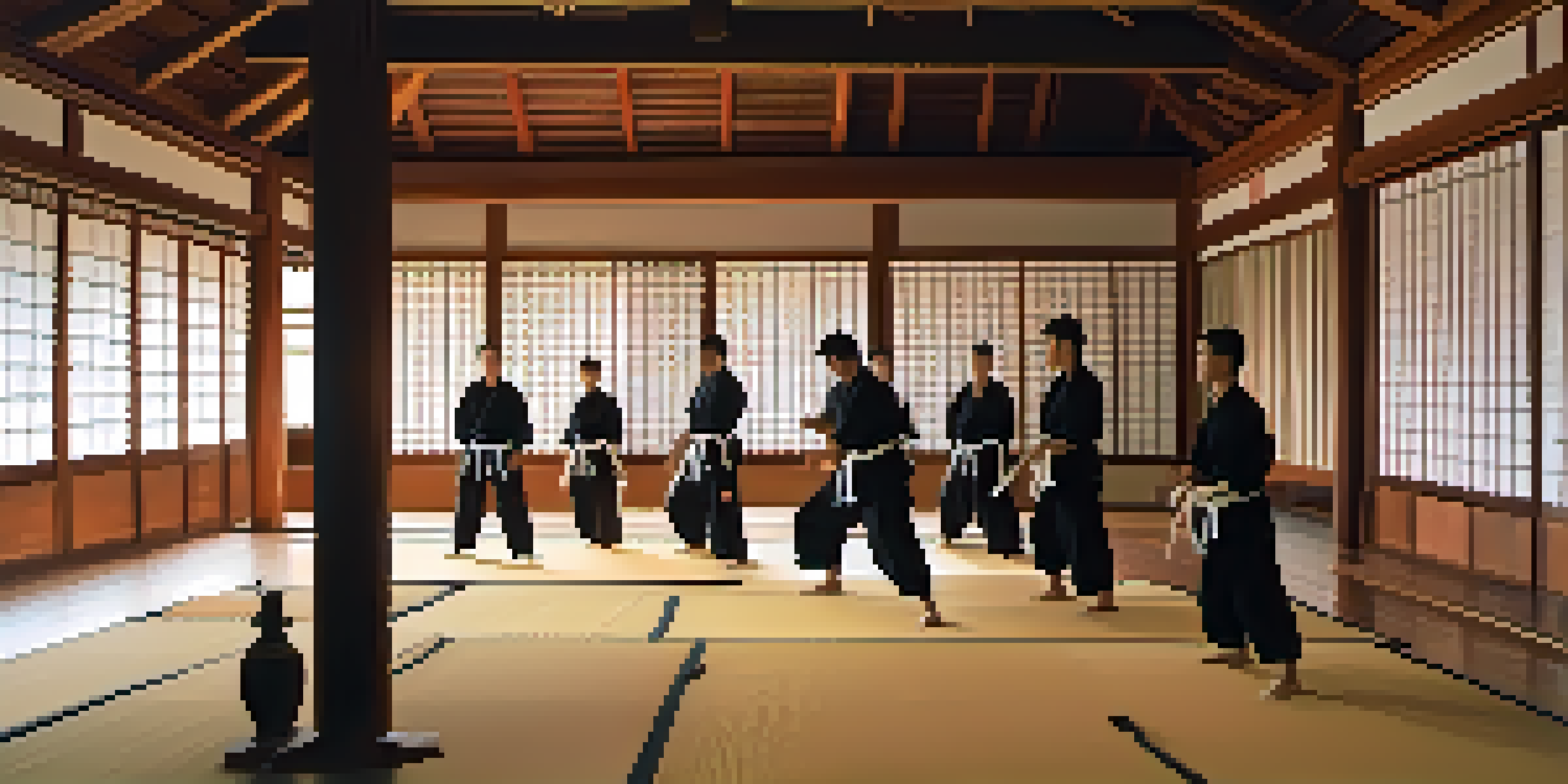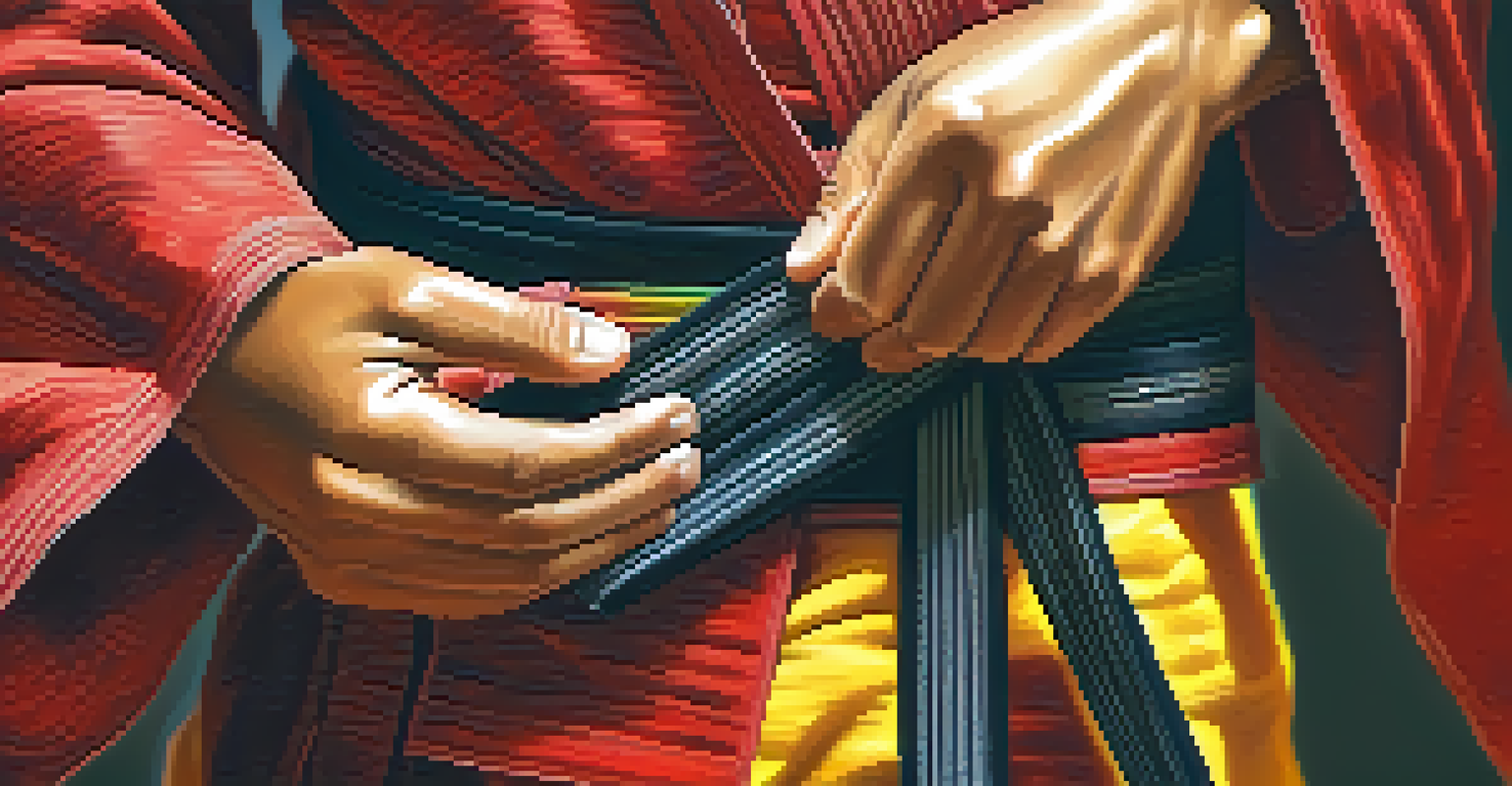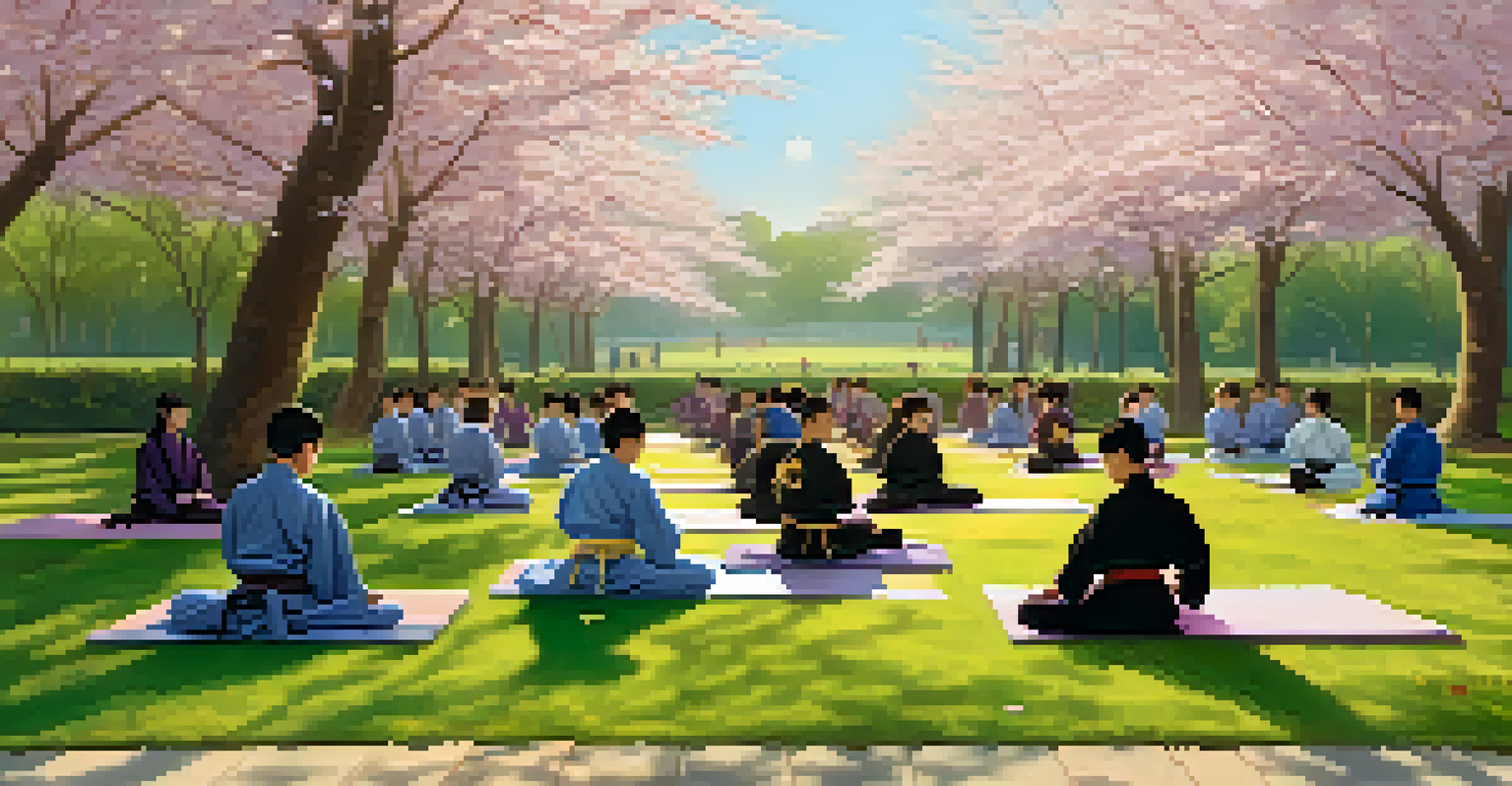Cultural Appropriation and Authenticity in Martial Arts

Understanding Cultural Appropriation in Martial Arts
Cultural appropriation occurs when elements of one culture are adopted by another, often without understanding their significance. In martial arts, this can manifest when practitioners from outside the culture adopt styles, clothing, and practices without respect for their origins. For example, wearing a kimono in a judo class can be seen as appropriation if done without acknowledging its cultural context.
Cultural appropriation is the act of taking or using elements of one culture by members of another culture, and it often occurs without understanding or respecting the original context.
This phenomenon raises questions about respect and understanding, particularly in martial arts that have deep historical roots. Many martial arts, like karate and kung fu, are not just physical disciplines but also carry rich traditions and philosophies. When these are practiced superficially, it can lead to misrepresentation and trivialization of their true meaning.
It’s crucial for martial artists to engage with the culture behind their practice. This means learning about the history, values, and traditions associated with the art form they are studying. By doing so, practitioners can avoid appropriating culture and instead honor it, creating a more respectful environment.
The Line Between Appreciation and Appropriation
Appreciation and appropriation are often confused, but they have distinct differences. Appreciation involves a respectful interest in another culture, seeking to understand and honor it. For instance, attending a traditional martial arts class while learning about its history shows appreciation, whereas merely adopting its techniques without context may cross into appropriation.

When martial artists appreciate the culture, they can engage in meaningful exchanges that enrich their practice. This might include learning the language, participating in cultural events, or even studying the philosophy behind the martial art. Such efforts deepen one's connection and foster mutual respect between cultures.
Understanding Cultural Appropriation
Cultural appropriation in martial arts occurs when practitioners adopt styles and practices without respecting their cultural significance.
Conversely, appropriation can lead to resentment and a sense of cultural exploitation. It diminishes the hard-earned traditions of practitioners who have devoted their lives to preserving their culture. Recognizing the fine line between appreciation and appropriation is vital for cultivating a respectful martial arts community.
The Role of Authenticity in Martial Arts
Authenticity in martial arts refers to the genuine practice of techniques, philosophies, and traditions as they were intended. Many martial artists strive to maintain authenticity, which means respecting the origins of their practice and acknowledging its historical context. This commitment not only enhances their skills but also honors the legacy of those who came before them.
True appreciation of another culture involves understanding its history and significance, not just adopting its surface elements.
Practicing authentically requires continuous learning and reflection. It’s about understanding the core values of the martial art, such as discipline, respect, and humility. This deeper understanding often leads to a more fulfilling martial arts journey, as practitioners connect more profoundly with their art.
However, the quest for authenticity can be challenging, especially in a globalized world where martial arts are often commercialized. Schools may prioritize profit over tradition, leading to diluted practices. By advocating for authenticity, martial artists can help preserve the integrity of their art for future generations.
Challenges of Maintaining Cultural Integrity
Maintaining cultural integrity in martial arts can be a complex endeavor. With the rise of mixed martial arts and commercialization, many traditional practices face pressure to adapt or modernize. This evolution can sometimes lead to a loss of the original cultural elements that define these arts.
Moreover, as martial arts gain popularity worldwide, the risk of cultural dilution increases. For example, a traditional karate dojo may start offering classes that prioritize flashy techniques over deep-rooted traditions, appealing to a broader audience but potentially losing its essence. This tension between adaptation and preservation is a common challenge.
Appreciation vs. Appropriation
Recognizing the difference between appreciation and appropriation is essential for fostering mutual respect within the martial arts community.
Addressing these challenges requires a concerted effort from both practitioners and instructors. By fostering discussions about the importance of cultural integrity, martial arts communities can work together to protect their heritage while remaining relevant in a rapidly changing world.
Examples of Cultural Appropriation in Martial Arts
One notable example of cultural appropriation in martial arts is the commercialization of traditional Asian practices without proper context. For instance, some fitness programs use elements of kung fu or tai chi, packaging them into trendy workout classes while neglecting their cultural significance. This can trivialize the rich history associated with these practices.
Another example occurs when martial artists adopt traditional attire without understanding its purpose or meaning. Wearing an obi (belt) in judo or a gi (uniform) in karate can be seen as a sign of respect, but using these items as fashion statements at non-martial arts events can come off as disrespectful. Such actions can perpetuate stereotypes and misunderstandings about the art.
These examples highlight the importance of being mindful and respectful in martial arts practice. By recognizing when appropriation occurs, individuals can take steps to educate themselves and foster a more respectful environment within the martial arts community.
How to Promote Cultural Respect in Martial Arts
Promoting cultural respect in martial arts begins with education. Instructors should emphasize the history and significance of their martial art, encouraging students to engage with its cultural roots. This could involve discussions about the traditions, values, and philosophies that underpin their practice, fostering a sense of belonging and respect.
Encouraging cultural exchange is another effective way to promote respect. Inviting practitioners from different backgrounds to share their experiences and insights can enrich the learning environment. This collaborative approach not only enhances understanding but also builds bridges between cultures, creating a more inclusive community.
Promoting Cultural Respect
Promoting cultural respect in martial arts involves education and encouraging cultural exchange to honor the traditions shaping the practices.
Ultimately, cultivating respect in martial arts is a shared responsibility. All practitioners must commit to understanding and honoring the traditions that shape their practice, ensuring that cultural appropriation is minimized and appreciation is encouraged. By fostering mutual respect, the martial arts community can thrive while honoring its diverse heritage.
Conclusion: The Path Forward for Martial Artists
As martial artists navigate the complexities of cultural appropriation and authenticity, the key lies in respect and understanding. By recognizing the origins of their practices and striving for authenticity, practitioners can honor the rich heritage of their martial arts. This journey requires ongoing education, reflection, and a willingness to engage with the cultures that shape their art.
Moving forward, it’s essential to create spaces for open dialogue about these issues within the martial arts community. By sharing experiences and insights, martial artists can collectively learn how to appreciate rather than appropriate. This not only enriches personal practice but also strengthens community bonds.

In conclusion, the path forward for martial artists lies in a commitment to cultural respect and authenticity. By embracing these values, practitioners can ensure that their martial arts journey is not only fulfilling but also contributes positively to the rich tapestry of global martial arts.